

| The Tortoise Beetles of Nottinghamshire |
| .... |
| Within
invertebrate Orders,there are always particular families which are
made immediately recognisable through showing a combination of one
or more features running through the majority of species contained
within it. Beetles (the Order Coleoptera for those new to insects) come in a range of imaginative shapes, sizes and colours, which render many to be distinctive enough to be assigned to a Family on sight. Beetles of the Family Cassida, probably represent one of the more distinctive Families. They are instantly recognisable by their quite unique shape and in some ways, look less 'beetle like' than most. Cassida earn their common name of Tortoise Beetles purely by their appearance and likeness to the shell of a Tortoise. If you come across one during a woodland walk, then identification is not too difficult for those living in Nottinghamshire, as they're is not a deal of species choice, so identification should not really be too much of a problem, especially if a note on what plant your specimen was on. |
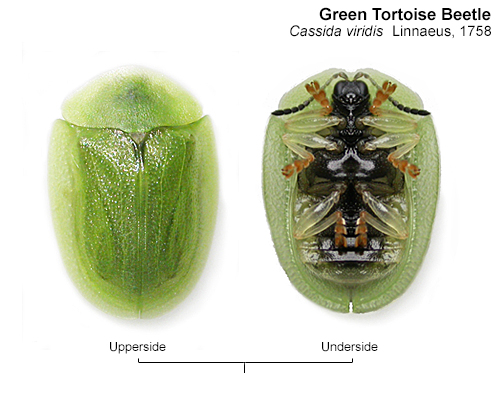 |
| .... |
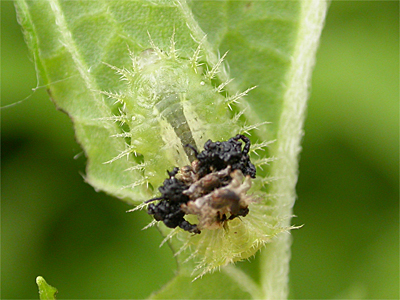 |
Historical records of Cassida
beetles in Nottinghamshire Historically, J.W. Carr listed just three species in his book 'The Invertebrate Fauna of Nottinghamshire: Nottingham. J.& H. Bell Ltd (1916)'. Today's modern Nottinghamshire naturalists are so fortunate to have Carr's original volume and his later follow up Supplement to use for historical research. His book provides an often eye-opening view of times past and to see just how fortunes for different species have changed in a century. Carr listed records of Cassida flaveola, Cassida rubiginosa (given as C. viridis in Carr) and Cassida vittata, but for some reason did not include a record of Cassida nobilis, even though the record was credited to one of Carr's regular contributor of records. Many species don't have a great UK range and most are more southerly than Nottinghamshire in their distribution and there are several species of Cassida, which would be considered highly unlikely records. Those species falling into this category are Cassida murraea, Cassida nobilis and Cassida vittata. |
| Cassida
larvae are just as distinctly shaped as the adults and the larvae of
Cassida rubiginosa and Cassida viridis (above
left) are easy to find by examining the correct hostplant in the
correct habitat. The larvae of most species carry their moulted
skins and faeces above their backs as protection, even though to us,
it makes them more conspicuous.
Nottinghamshire species list and accounts The following species have all been recorded from Nottinghamshire. Cassida murraea Linnaeus, 1767 Cassida flaveola Thunberg, 1794 Cassida nobilis Linnaeus, 1758 Cassida prasina Illiger, 1798 Cassida rubiginosa Müller, O.F., 1776 Cassida vibex Linnaeus, 1767 Cassida viridis Linnaeus, 1758 Cassida vittata de Villers, 1789 |
|
Cassida murraea
(Fleabane
Tortoise Beetle) Linnaeus,
1767
|
||
|
Historical records:- We
have a report of one from Teversal Pastures, possibly dated as 1998
(Barton, T.).
This is perhaps the most unlikely species out of all the Cassida
to have been reported, or recorded in Nottinghamshire. It is a beetle of
southern Wales and south-western counties of the UK, but there is a
record from as far north as Merseyside but this is rather isolated. Host Plants:- Pulicaria dysenterica (Fleabane) and Inula conyzae (Ploughman's Spikenard) |
||
| Cassida flaveola (Pale Tortoise Beetle)
Thunberg, 1794 |
||
|
Historical records and known modern
distribution:- Has always been scarce in Nottinghamshire
and remains so. J.W. Carr gives details of two records including
Treswell Wood on 29/05/1899 (Thornley,
A. Rev) and Park Drain, Misson on
22/09/1914. The only
recent records appear to be from Sherwood Heath SSSI in 2003 and
again in 2006 (Godfrey, A.)
plus single records from Meden Vale in 2011
(Pendleton, T.A. and Pendleton, D.T.)
and Stapleford in 2013
(Lane, S.). Host Plants:- Stellaria graminea (Lesser Stitchwort) and Stellaria holostea (Greater Stitchwort) |
||
| .... | ||
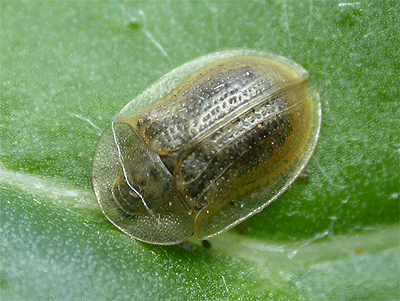 |
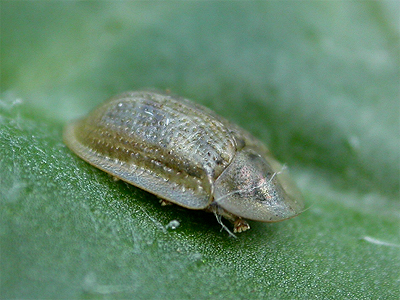 |
|
|
Cassida nobilis
Linnaeus, 1758
|
||
|
Historical records and known
distribution:- Only known from a single historical
record from South Leverton on 10/08/1900
(Thornley, A. Rev), but for some reason, the record was never
listed by Carr in his 1916 book 'The Invertebrate Fauna of
Nottinghamshire'. Host Plants:- Chenopodium album. |
||
|
Cassida prasina
Illiger, 1798
|
||
|
Historical records and known
distribution:- A single record from Attenborough NR in
2007 (van Leeuwen, I.) remains the
county's only record. Likely to occur here again, as it has a patchy
distribution over most of the southern-half of the UK and Wales, but
especially in south-eastern counties. Host Plants:- Achillea millefolium. |
||
|
Cassida
rubiginosa
(Thistle Tortoise Beetle) Müller, O.F., 1776
|
||
|
Historical records and known
distribution:- Carr lists a number of records in his account of
this species. 'Sherwood Forest near Ollerton, June 1914
(L.A. Carr). Retford district, not
uncommon on Cnicus arvensis (now Cirsium arvense);
South Leverton; Treswell Wood; Cottam; Littleborough; Kingston-upon-Soar
(Thornley, A. Rev) and
Radcliffe-on-Trent 01/05/1913. He also lists further records from Crow
Hill Wood, West Leake 01/06/1915 (Robinson)
and Epperstone Park on 06/09/1913 (Thornley, A
Rev and Carr). This is by far the most common species to occur in Nottinghamshire. It occurs throughout the county and is the species most likely to be found. The reddish markings at the base of the elytra can sometimes be absent on fresh specimens, making them superficially look similar to Cassida viridis. Host Plants:- Cirsium arvense (Creeping Thistle) and Centaurea spp (Knapweeds) |
||
| .... | ||
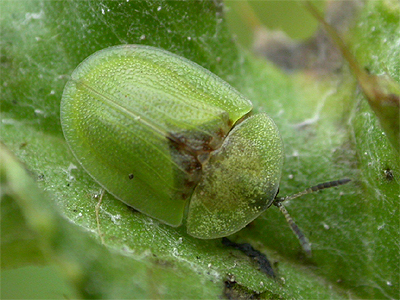 |
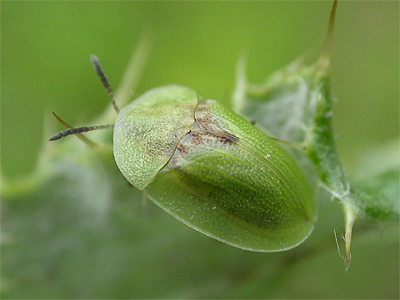 |
|
|
Cassida viridis
(Green Tortoise Beetle) Linnaeus, 1758
|
||
|
Historical records and known
distribution:- Not widespread and is probably most likely to be
found along the more southerly reaches of the Trent Valley. There may well be an element of under-recording, but
it can be easily found at Colwick CP by searching Gypsywort Lycopus europaeus growing at the edge of the Trout lake.
Host Plants:- Mentha aquatica (Water Mint) Lycopus europaeus (Gypsywort) and Stachys palustris (Marsh Woundwort) |
||
| .... | ||
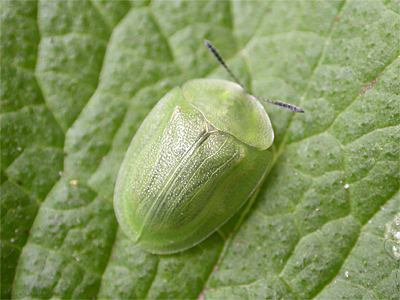 |
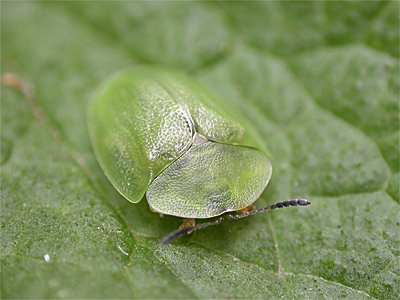 |
|
|
Cassida vittata
de Villers, 1789
|
||
|
Historical records and known
distribution:- One extremely vague historical record, which
Carr lists only as 'Cumber Park' (Pegler, S.)
and gives no other information. Unlikely (but not impossible) to be
found again in Nottinghamshire, as even with a largely coastal,
southerly UK distribution, it does occur as far north as the north
Norfolk coast. Host Plants:- Chenopodium spp (Goosefoots) Pulicaria dysenterica (Fleabane) and Atriplex prostrata, a coastal plant which has spread inland over the past thirty or so years. |
||
| Distribution maps for all species with modern records | ||
| .... | ||
| Cassida murraea Linnaeus, 1767 | Cassida flaveola Thunberg, 1794 | |
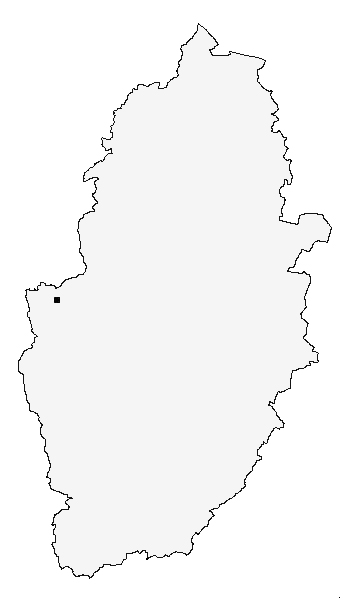 |
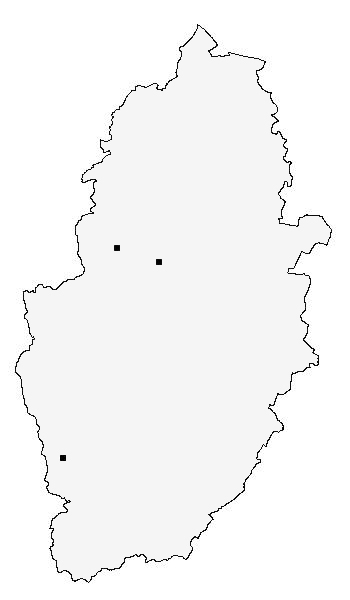 |
|
| Cassida prasina Illiger, 1798 | Cassida rubiginosa Müller, O.F., 1776 | |
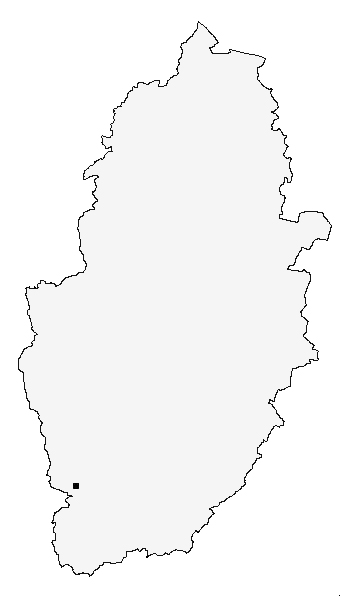 |
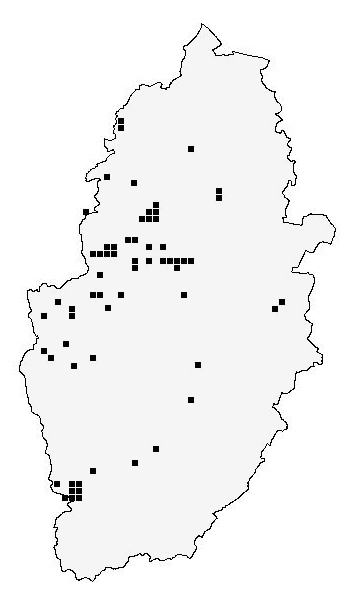 |
|
| Cassida vibex Linnaeus, 1767 | Cassida viridis Linnaeus, 1758 | |
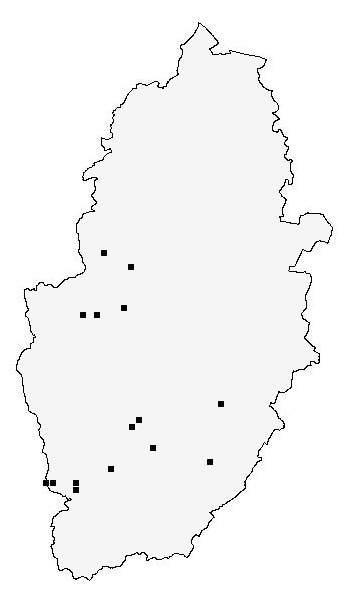 |
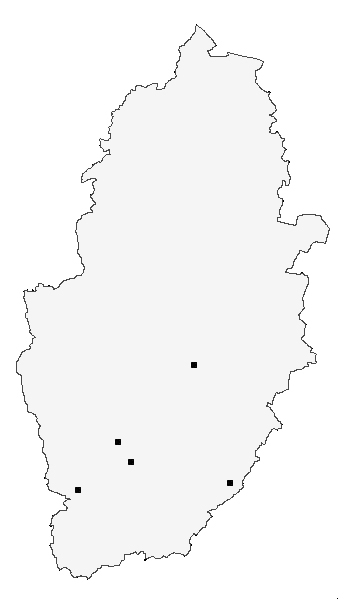 |
|
| Beetles |
| Homepage |